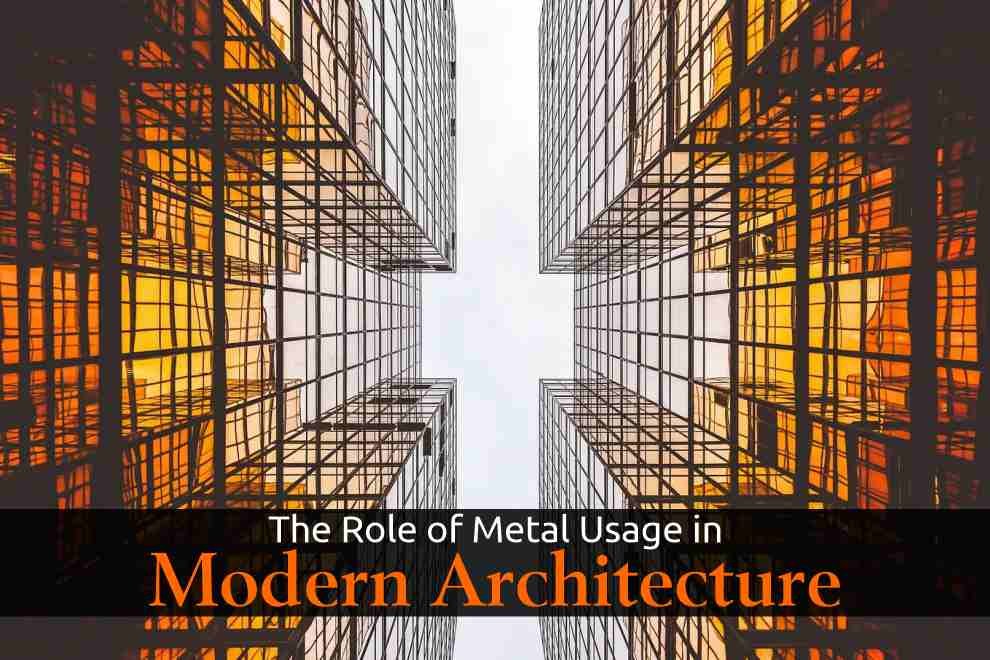Metal is an essential item now for construction in modern architecture, having a special mix of beauty and use. The progress of using metal in building design has brought about new methods that boost the appearance and structure safety of constructions. Starting from high-rise buildings to houses, the part played by metal in creating architectural designs has many sides. It involves providing support to structures as well as adding detailed elements for design purposes.
Creating Iconic Designs
The first reason to use metal in architecture is its visual adaptability. Metals such as aluminum, steel and copper can be formed and finished in many different manners to bring about various aesthetics. The smooth and contemporary appearance of metal surfaces may change the outside of a structure significantly, turning it into an architectural symbol. Metal panels, cladding and facades provide infinite creative possibilities. They let architects explore with textures, patterns as well as colors. The reflectiveness of metals also boosts the visual effect of buildings contributing to lively and attractive designs.
Building for Longevity
Metals are very important in architecture because they have a strong and lasting nature. This is needed for the basic strength of buildings. Steel, especially, acts as a main material for creating skyscrapers, bridges or big commercial constructions because it has high tensile strength and can handle heavy loads well. The use of steel beams and steel pipe guarantees that buildings are able to endure harsh weather situations along with movements from earthquakes (seismic activity). Moreover, metals such as titanium and stainless steel have a good resistance to corrosion which makes it suitable for architectures that should last long. This durability decreases the frequency of fixing and upkeeping needed resulting in financial benefits over time of the building.
Supporting Green Building Practices
Metal’s part in sustainability within architecture is gaining acknowledgement. Metals are greatly recyclable, aiding in waste reduction and preservation of materials from nature. When metals are reused, it does not affect their quality or how effective they are for fresh construction work. Metal roofing and cladding also have the benefit of enhancing a building’s energy performance. It can reflect solar heat, decreasing cooling expenses in hot weather. Certain types of metal, for example aluminum, are light in weight and this lowers the energy needed to move them during transportation or set up process. These aspects that are good for sustainability match with green building methods, aiding architects and builders in attaining environmental certification requirements.
Beyond Traditional Uses
The use of metals in modern architecture has gone beyond the usual structural parts. Developments in metalworking and creation have given rise to fresh uses both inside and outside buildings. Metals are now seen in complicated lattice structures, ornamental screens, and tailor-made fixtures that enhance architectural designs with their special character. Technologies that have advanced, like metal 3D printing and laser cutting, permit designs which are very exact and complex – something not possible before. These new methods help push the limits of creativity and usefulness in architecture projects.
Enhancing Performance
The mixing of metal can improve the function and appearance of buildings when it is combined with different substances. When we mix metal with glass, concrete or wood – this produces contrast in textures as well as enhances visual appeal. For example, using metal frames and supports can give strength to huge glass facades. This makes it possible for rooms inside the building to have big windows that allow in lots of natural light. Also, metal accents when combined with classic materials such as wood can give a modern feel to the overall look. This mix of old and new architectural styles creates harmony, permitting architects to accomplish their artistic and practical aims in their designs.
The part that metal plays in today’s architecture is ready to expand further as fresh technologies and eco-friendly approaches keep progressing. Metals provide a flexibility, durability and sustainability not found elsewhere; this makes them very suitable for many architectural uses. As architects and builders aim to construct inventive, robust structures that are kind to the environment, metal usage will stay at the leading edge of architectural design. Metal is changing the future of modern architecture, from making it look better to keeping its strength and supporting green building.
Also Read: Data Warehouse & Business Intelligence Architecture










